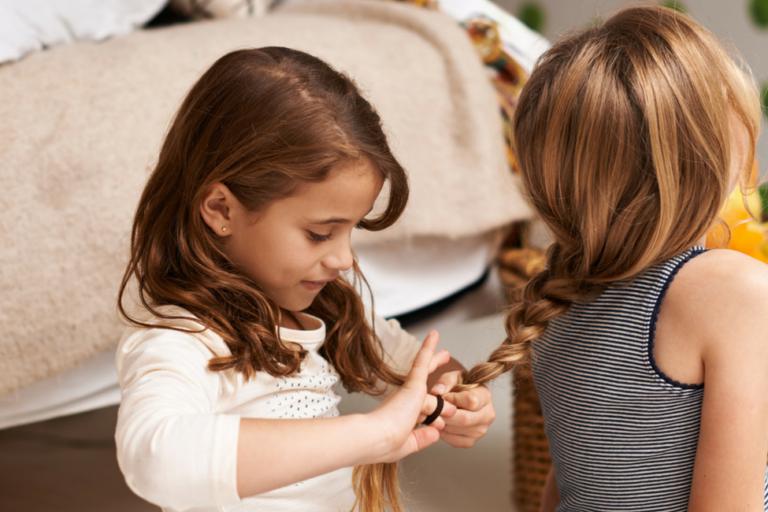
Why do children have more head lice than adults?
By Inès BennasUpdated on ShareSend by e-mail
I certify that I do not send unwanted e-mail Worst enemies of parents, lice love to lodge on children's scalps. Adults, however, are much less contaminated by these little critters! Why ? We explain to you.Invasive parasites, lice have lived on our scalps since the dawn of time and getting rid of them is an ordeal... They live on everyone's head: babies, children, adults, whatever the type of hair. However, we still notice that they are particularly present on the heads of children. But why ? We enlighten you.

The school is conducive to the spread of lice
School is one of the favorite places for head lice! They can wander from head to head very easily, and for good reason: in class as in the playground, the children are close to each other. While playing or as part of a mark of affection, they do not hesitate to stick their heads to those of their friends and. It is therefore easy for lice to go from noggin to noggin, clinging to children's hair, thanks to their powerful hooks (remember that lice do not jump, contrary to rumor). Community life and promiscuity contribute to the fact that children are more affected by lice. Indeed, there are at least twenty per class, and often do group activities, in sports or otherwise. Hence the interest of lice repellents! While adults, they rub shoulders with fewer people and do not often have the opportunity to have close physical contact at work with their colleagues.
Video of the day:Children are more tactile than adults
The child is uninhibited from all embarrassments, he does not have the notion of respecting the “vital space” of the other. The little ones are hugging, kissing, and sticking their heads together several times a day, while the adults are much more distant from each other. The lice therefore have few opportunities to spread on the scalp of the latter.
Lice love children's objects
As we know, children like to barter with their friends. They exchange their darlings for others, give their collar for a hat… The problem is that the lice cling to their objects and spread easily afterwards. Indeed, a louse can survive outside a skull, and that for about 24 to 48 hours. Sharing your hat with your friend is therefore to be avoided! Do not hesitate to remind your child regularly. Conversely, adults don't have fun (at least in theory) swapping their hat for their friend's scarf. To each his own! And if this is the case, a machine wash at 60° can eradicate the invader. For the most delicate objects, locking them in a bag for about 3 days will be enough to overcome the lice.
Lice prefer children's scalps
According to PediAct, a laboratory formulating health and well-being products for infants and children, the little ones secrete less sebum. However, the less sebum there is, the easier it is for the louse to move around on the head. However, having dirty hair absolutely does not prevent lice from colonizing the skull. The myth of the louse that does not go well on clean hair is aptly named!
In addition, these little beasts like long hair: we saw it before, they cling to it more easily. Little girls often have longer hair than their moms, which could also explain why children get more head lice.
Read also:ShareSend by e-mail I certify that I do not send spam emails






